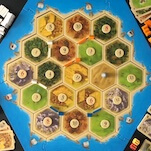Many years ago, I spent three months as intern in the test kitchen of Martha Stewart Living. They were the three longest months of my life.
In the grand scheme of things, likely thousands of interns and employees have worked for Martha Stewart Living Omnimedia. I cannot speak for them; doubtlessly a large percentage view their own time there as a job, with ups and downs, just as any job holds for any person.
My days there were heady, trying. I was only 22, and a young 22 at that. I’d felt fortunate to score the internship at Martha’s headquarters in Manhattan; everyone else in my cooking school class was headed to tropical resorts or the bottom rung of renowned high-end restaurants. As the lone aspiring food writer of the group, I was always the oddball—I sensed they considered my career track quaint—but often I could hold my own with them in the kitchen, and I prided myself on that. Unlike many of my classmates, I didn’t want to open my own restaurant someday. My dream was to be on the staff of a national cooking magazine, and I seized the Martha Stewart gig as my entrée.
Quite foolishly I walked into 11 West 42nd Avenue thinking everyone I encountered would consider me a charming riot, full of spirit and vim. But the atmosphere in the kitchen I walked into struck me as competitive, tense. On my first day of work, the test kitchen director distractedly passed me off to an indifferent freelancer and instructed her to train me; in essence, I didn’t get trained. So I had no idea what I was supposed to be doing, and instead of asking other staffers for clarification, I skulked around, trying to go as unnoticed as possible. Various culinary and inter-personal disasters ensued: the matzo-ball incident, the apricot tart debacle. If the Me of Then worked for the Me of Now, Now Me would be tearing her hair out.
Because I liked to get a head start on the day, I aimed to be the first person in the test kitchen every morning. I’d get a pot of coffee going and pore over my to-do lists and recipes, and everything had this intoxicating veneer of potential success. There I was, making it happen in the big city! But by the end of the day, I’d flee from the kitchen into the dark, crowded streets with a heavy heart and a broken soul. I’d have initiated any number of failures during the preceding hours: ingredients I’d forgotten to order, tasks I’d neglected to prioritize, recipe changes I’d neglected to input. Inputting changes is the whole point of testing recipes, really, but I didn’t have the courage to approach most of the various editors with the flaws I’d discovered in assorted amounts or timings, and so I spent most of my weeks there in a self-imposed shadow state. No vim, no charm.
There were nifty aspects to the whole thing, though. I got to shop at Balducci’s every morning, paying with a credit card whose bumpy, raised letters read MARTHA STEWART. For exercise, I speed-walked the many blocks from the Village to Midtown, my arms aching from schlepping white-and-green Balducci’s bags overflowing with top-tier ingredients. The test kitchen would have covered the costs of a cab ride, but I felt resorting to cabs reflected a moral failing.
One day, a bossy young assistant with Martha By Mail (Martha’s now-shuttered catalog enterprise) breezed in and commandeered my services. “Make two batches of Martha’s Swiss meringue buttercream,” she said. “It’s the one she always makes. See if it yields enough to decorate these lamb and bunny cakes. Make them look like the cakes in the picture.” She pointed to a colorful how-to pamphlet with springy images of vintage-looking baby animal effigies, the kind baked in 3-D aluminum molds. “I baked these cakes months ago, but I never got around to dealing with them, and now we’re on a deadline,” she said, extracting two shapeless foil bundles from the freezer. “Decorate those to save time. They’re probably all dried out by now, but we don’t need to eat them. Just think of this as a craft project. Except do it fast.” She swung her Pashmina wool wrap over her shoulder and strode out of the kitchen.
I peeled back the foil from the cakes; from beneath their cocoons of frosty Saran-Wrap, they gave off intense vapors of freezer burn. Not very Martha. But I set to work.
The most important step in enrobing a cake is the crumb coat. This is the thin, messy layer of frosting that you spread on first. After refrigerating the cake, the frosting stiffens and locks in all of those pesky crumbs, so they don’t wreak havoc later on, when you are trying to get a pretty, smooth top layer.
So I started out with the crumb coat on the bunny. The poor thing looked disgusting, like a mutant stillborn rabbit all coated with slime and vernix, but I knew it would get spruced up later on when I started piping shapely asterisks of buttercream with the star tip.
Oh god, she had seen it! Martha was surely fixing to ream me for my sorry disaster of a cake, right in front of all those important people seated around the long, elegant conference table in her office.
It was a busy day in the test kitchen, and both of the kitchen’s two refrigerators were packed with raw ingredients and finished recipes awaiting approval from editors. There was one refrigerator with space, in an employee break room that was a decent jaunt down the hall. To get there, I’d have to walk past Martha’s office, which had a giant glass wall, presumably so she could see at a glance what was happening all around her. It reminded me of a giant luxury fish tank.
Martha was not always around. She had multiple houses, multiple offices, multiple television studios. Dozens of places to be, and only one her. When she was in the building, you knew it before the elevator doors slid open, because the collective tension of her minions hung forebodingly in the air.
And I knew Martha was there that day. In her office. Behind the glass. Because of the air.
So I scurried as fast as I could with my unsightly, unfinished bunny cake, eyes set straight ahead. I’d had a few fleeting Martha encounters, some pleasant, some lacerating. I preferred not to add another to my list.
And when I made it to the safety of the employee break room, with its glass jars full of pretzel rods and trail mix, I exhaled. Into the fridge went the cake; back to the test kitchen I headed.
But this time, I hadn’t even cleared Martha’s fish tank when that unmistakable voice bellowed out: “BRING ME THE BUNNY CAKE!” Oh god, she had seen it! Martha was surely fixing to ream me for my sorry disaster of a cake, right in front of all those important people seated around the long, elegant conference table in her office.
I froze. “It’s not ready yet!” I squeaked in a pitiful tone before I raced to the test kitchen, looking straight ahead. Away from Martha. Once inside, I paused to catch my breath. Was I safe?
Yes. I was safe.
No. Half a minute later, Martha’s assistant Annie raced in. “Martha’s screaming for bunny cake,” she said, her own eyes wide and rabbit-like. (Years later, I recognized the same expression in a photo of faithful Annie on the stand, testifying at the trial for Martha’s insider trading scandal.)
“It’s not my fault!” I said. “The cake looks terrible because I’m not even done with it yet, and I still need to pipe the rest of the buttercream and—“
“Oh,” said Annie, somewhat anticlimactically. “You mean the bunny cake isn’t ready to eat? Because Martha wants a piece.”
Well. One of the most famous women in the world wanted to eat a hunk of the ugliest semi-finished cake ever created. She led a high-stress life, and perhaps she was at the point in her 20-hour day when she needed sugar and carbs, plain and simple.
I was privy to much kindness in that kitchen, but I was too petrified to recognize it as such. Onward I stumbled, botching recipe after recipe, a shadow of my real self, a ghostlike pest in the test kitchen.
Under a cake dome nearby stood a carrot cake I’d tested the day before. The test kitchen supervisor, who intimidated me more than a dozen Marthas ever could have, rejected the cake because I’d used the coarse—not the fine—holes on the box grater to shred the carrots. The story was on deadline and they had to send a car for me so I could rush to the bodega and buy more carrots to re-test the cake. I’d wasted food, money, time. The box grater I grew up at using at home only had coarse holes, not fine ones—one side had that cabbage-slicing contraption no one uses; the other two had those useless raspy spars that can’t zest a lemon or grate parmesan cheese for crap, even though they’re great at skinning human knuckles. My mistake was understandable, but not forgivable.
One of freelancers in the test kitchen grabbed three dessert plates and three dessert forks. Then she carved up generous wedges of my delectable, rustic-textured carrot cake. (Martha had requested additional servings for her daughter Alexis and Alexis’s fiancé, who were also in attendance at the important-person meeting in the fish tank.)
The day progressed, and I finished decorating the bunny cake and the lamb cake with unsure, shaky hands, piloted with the mix or relief and terror that colored so many of my days in that place. One batch of Martha’s Swiss meringue buttercream did indeed suffice to decorate one cake. Several of the editors complimented me on my decorating skills, which was tactful, because the average grade-schooler has better piping skills than me on my best of days.
I was privy to much kindness in that kitchen, but I was too petrified to recognize it as such. Onward I stumbled, botching recipe after recipe, a shadow of my real self, a ghostlike pest in the test kitchen.
On my last day, the test kitchen staff surprised me with a Baskin-Robbins ice cream cake (one layer of mint chip; one layer of cookies n’ cream). One of the outgoing editors had been presented with an opera torte from Payard for her goodbye to-do (dear god, do I love an opera torte), but that ice cream cake meant more to me than a stack of opera tortes. During all of the feverish days I spent there, I considered myself a sad, clueless idiot. But, in all likelihood, most of those fashionable, put-together people at MSL had merely seen a homesick young person who was out of her element.
When Martha yelled at me for the bunny cake, she was inviting me into the fish tank. Technically she was inviting an inanimate edible bunny into her fish tank, but still. In my hot little hands I’d held something she needed and valued. And I ran away. My emotional scars from that period are mostly healed over, invisible to the naked eye. Since then I’ve become fairly adept at facing the dreary realities of grownup life, the universal ones that make a Come to Jesus talk from Martha Stewart look like a cakewalk. But I’ll never know the satisfaction of handing her a nice chunk of dessert.
Those 3-D vintage-style cake molds still freak me out, although I used to want one like crazy as a kid. That I still return to that carrot cake recipe, with its dainty texture and zippy kiss of fresh ginger, only proves what a fine confection it is. The attractive candied carrot strips, which are a giant pain in the ass, are optional.
As long as Martha Stewart’s name carries pop culture caché, I will continue telling my story at bars and dinner parties. Who knows, maybe it’s not the way it really happened, but the memory resides in my brain with laser precision. It always goes over with a bang. At the climax of the routine, I exclaim “BRING ME THE BUNNY CAKE!” in the commanding, assertive voice I reserve for very special occasions. That voice works wonders. I learned it from the master.
Sara Bir is Paste’s food editor. Her writing has appeared in Best Food Writing 2014, Saveur, The Huffington Post, and Modern Farmer, and she is a regular contributor to Full Grown People. Sara lives in southeast Ohio, where she goes berserk looking through the woods for ramps and pawpaws, depending on the season.















































































